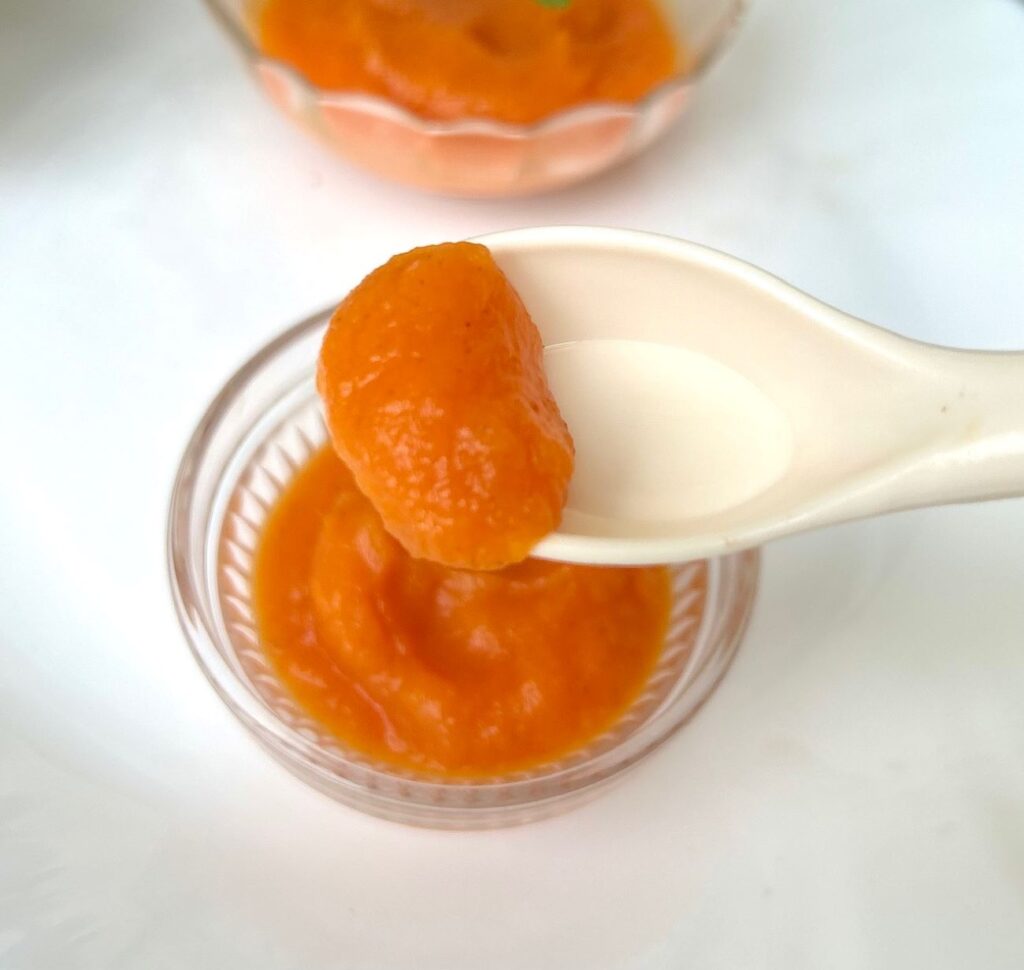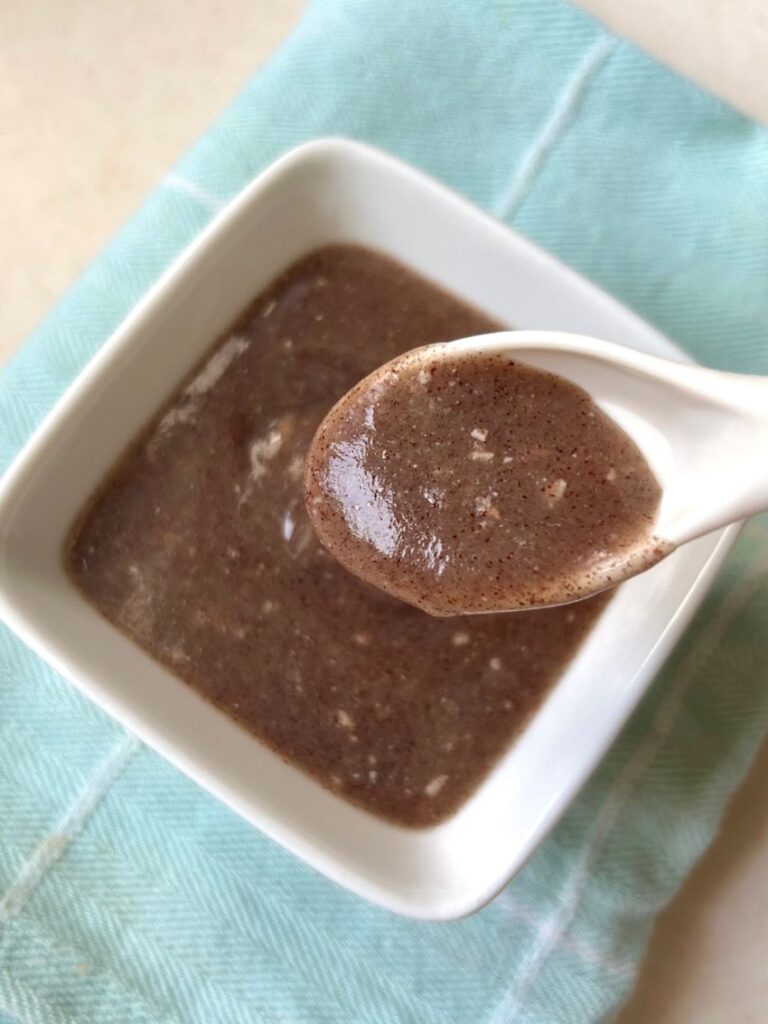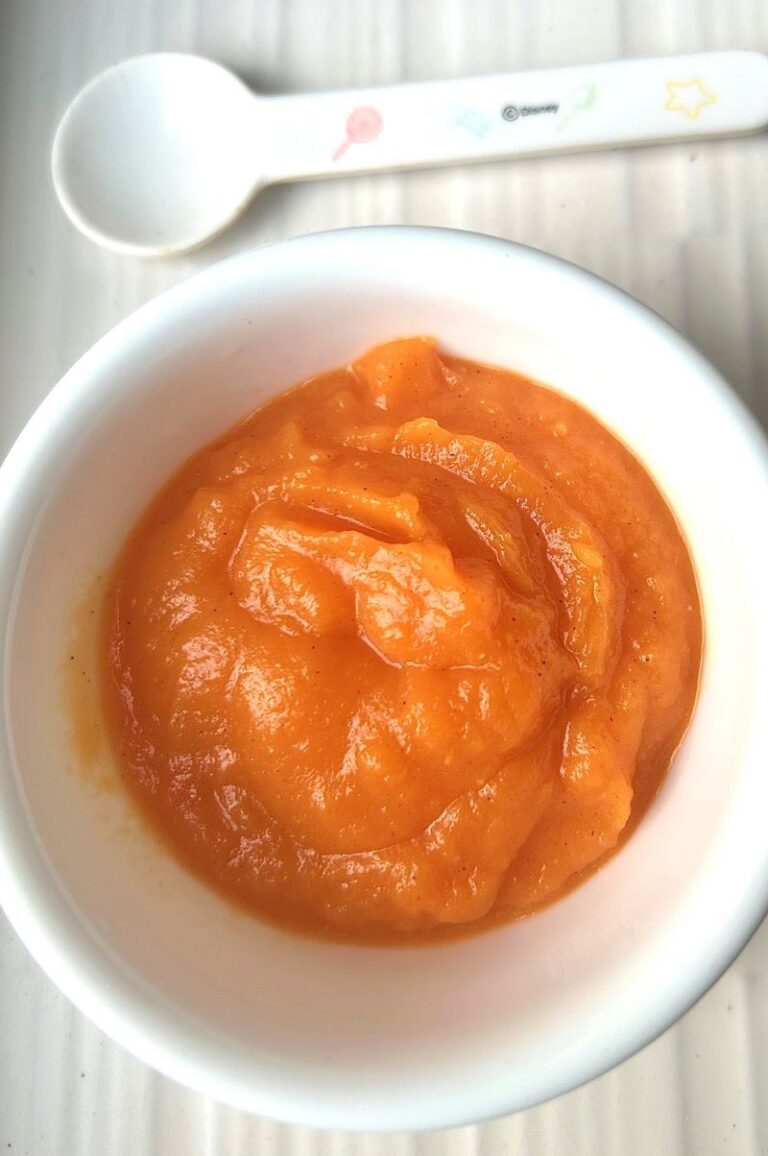Complete Guide to Baby’s First Solids
Discover a complete guide to your baby’s first solids! Learn when and how to introduce solid foods safely for healthy growth.
Your baby’s first food is always special. With so much conflicting advice available on weaning your baby, it can all get confusing. As a new mother introducing solid food to your child can be both exciting and daunting. The nervousness around it is something many mothers go through. Is this food safe for my baby? Will this cause allergy? Is the portion size enough? The questions and confusion can go on and on.
Having gone through the same myself, I can understand the plight of every new mother. Through this post, this is my humble effort to make this journey as smooth and rewarding for you. Let’s get started.
Know When Your Child Is Ready For Food
As per American Academy of Pediatrics, the right age for introducing solids for your baby is 6 months. Introducing foods before 4 months is not recommended. Always consult your child’s pediatrician before starting solid foods. Here are the signs you need to look for to know when your child is ready for solids:
- Sits up alone or with support
- Can control their head or neck
- Opens mouth when offered food
- Brings objects to their mouth
- Tries to grasp small objects like toys
Approach Solid As A Complement Food
When you’re ready to introduce solids, think of these foods as complementary foods since the bulk of your baby’s calories and nutrition will still be coming from breast milk or formula milk. Do not stop or reduce your child’s breastmilk or formula milk because that is still their main diet.
Serve your child solid foods 3 times a day; breakfast, lunch and dinner. Figure out what works best for your baby. For example, if your baby is a big drinker, you may want to offer solid food first and then after sometime formula or breastmilk.
Should I Wait For 3 Days Before Introducing New Foods
The simple answer to your question is, No!
The advice to wait three days in between introducing new weaning foods comes from outdated advice linked to the introduction of allergens. In the traditional method, new foods are introduced one at a time and the wait period between new foods is 2-3 days. This method makes it easy to identify the food that is causing an allergic reaction.
However, according to the new flexible method which is also suggested by the The Canadian Pediatric Society, it is not necessary to wait for 2-3 days for foods that are not included in the list of main food allergens. Only food allergens should be introduced one at a time with 3 day wait period. This method exposes the baby to several foods during the first few months of solid food feeding. It is easier for the parents as well. Also, the exposure to different tastes and textures during the first year of life promotes the child’s acceptance of a wider range of foods.

Feeding Tips (6 to 8 Months)
- Don’t use additional salt or sugar when making homemade infant foods. Do not add honey to your baby’s food before 12 months.
- Cow’s milk shouldn’t be added to the diet until your baby is age 1. Cow’s milk doesn’t provide the proper nutrients for your baby.
- Stage one food which is given at 6 months has a thin runny puree texture. Once your child is used to thin puree texture, you can progress to thicker texture.
- Give different food combinations once your baby has started accepting solids, textures and shows signs of interest. Increase flavour combinations gradually depending upon your baby’s stage.
- Begin with 1-2 teaspoons of a single-ingredient puree daily. Gradually increase the quantity and variety as your baby becomes comfortable.
- Feed all solid foods with a spoon. Your baby needs to learn to eat from a spoon. Don’t use an infant feeder.
- Giving fruit juices to infants younger than 1 year old is not recommended. Whole fruits are way more nutritious than fruit juice for any age group.
- Babies have sweet tooth is general, so try introducing vegetable purees or cereals first then progress to fruits. If you introduce sweet at first, there might be a chance your baby will reject vegetable puree. Though there is no evidence that your baby will develop a dislike for vegetables if fruit is given first but this is my personal experience.
- Do not put baby cereal in a feeding bottle. It might lead to choking or your baby can eat too much food which can cause the baby to gain too much weight.
- Don’t force your baby to continue eating if they turn away, or refuse to open up after only one mouthful. If they dislike a particular food, say rice cereal, try again after a few days. Once your baby is used to swallowing runny purees, thicken it by using less liquid.
- Be patient. Your baby will get the hang of eating solids eventually. If they are not interested in solids, continue nursing or bottle feeding like normal and try the solids again after a few days.

Recommended First Foods (6 to 8 Months)
Choosing the right food is essential for baby’s overall growth and development. As you introduce solids, increase the amount and variety week by week. Offer a variety of vegetables, fruits, whole grains, iron rich and protein rich foods.
Trust your baby to eat as much or as little as they want. Each day the amount they eat will vary.
Vegetables: avocado, broccoli, peas, carrots, pumpkin, zucchini, sweet potato, potato, cauliflower, green beans, spinach
Fruits: apple, pear, banana, mango, peach, strawberries, blueberries, orange, nectarine, papaya, apricots
Protein Foods: lentils, beans, well cooked and pureed chicken, oatmeal, hard boiled egg, soft cooked low mercury fish like salmon, trout (no bones), tofu
Iron Rich Foods: spinach, lentils, tofu, iron-fortified cereal, fish, broccoli, peas
Grains: rice, oatmeal, finger millet (ragi), barley, amaranth
Foods That Can Trigger Allergy
Some foods are more likely to cause an allergic reaction than others. When you introduce such foods follow the 3 days wait rule. For example, after you introduced egg to your baby, wait for 3 days before you introduce any other new food. Just in case the child gets any allergic reaction, it will be easier for you to identify which food caused it. Below is the list of all the food allergens that you need to watch out for, for the initial couple of months.
- Peanuts
- Eggs
- Fish
- Wheat; iron fortified cereals containing wheat
- Dairy Products; pasteurized cheese, yogurt
- Soya; tofu
Caution
- Cow’s milk should not be introduced to babies below 1 year.
- Honey is also a big NO for babies below 1 year because honey carries a risk of botulism, a serious illness.
- Avoid chocking hazards such as whole nuts, seeds, grapes, hard raw vegetables, chunky nut butters for babies under 1 year.
Does Baby Need Water?
Well, your baby doesn’t require extra water. Breastmilk, formula milk, purees provide all the fluids your child needs. However, it is OK to offer little extra water in between meals when you begin to give your child solid foods. Also, small amount of water may be needed during hot and humid weather. Use an open or free-flow cup. It will help your baby learn to sip and also develop fine motor skills.
How Baby Poop Changes After Solid Foods
Every baby is different and will have their own schedule that is normal for them. Once your baby starts eating solid foods, you may notice some changes in the colour, frequency and consistency of their poop. It will be thicker and more formed than breastmilk or formula milk poop. It may also take the colour of the food your child ate. The frequency of the poop will also go down. Solid food also produce smellier poop. So, get ready for smellier diapers!
Once babies starts eating solids especially cereals, chances of constipation increases. So watch out for that. In that case, increase your child’s fluid intake. Offer your child more breast or formula milk to help them relieve from constipation. The more important factors for determining if your baby is constipated is if they have:
- Pain and discomfort when pooping
- Extremely hard and difficult to pass poop
- Poop that appears pebble-like and is in small pellets or marbles
Consult your child’s doctor if the child hasn’t pooped in 3 days.
Bottomline
Most importantly, DO NOT FORGET to enjoy this journey. There might be certain days which will be stressful, but hang on! We all have been there. It will turn out just fine. Just don’t stress out too much. Follow your instincts. Each mother knows what’s best for her child.
Remember to offer a good variety of healthy foods. Watch your child for cues. Do not overfeed! If you have any questions about your child’s nutrition, including concerns about your child eating too much or too little, talk with your child’s doctor.
I hope you found this post useful. I would love to hear from you. Do share your experience and queries in the comment section below. Happy feeding mothers!







